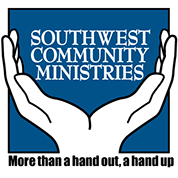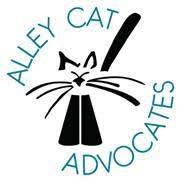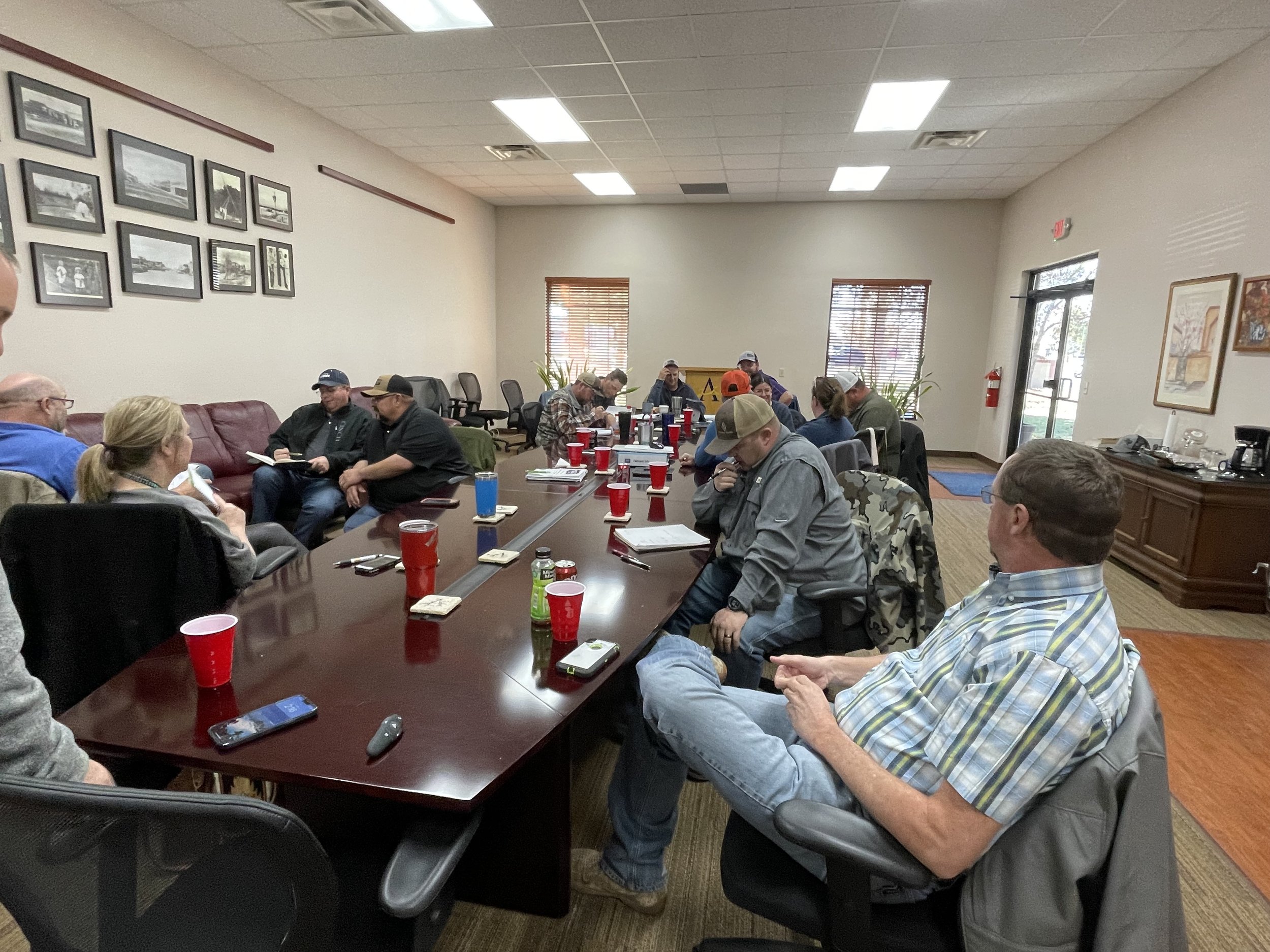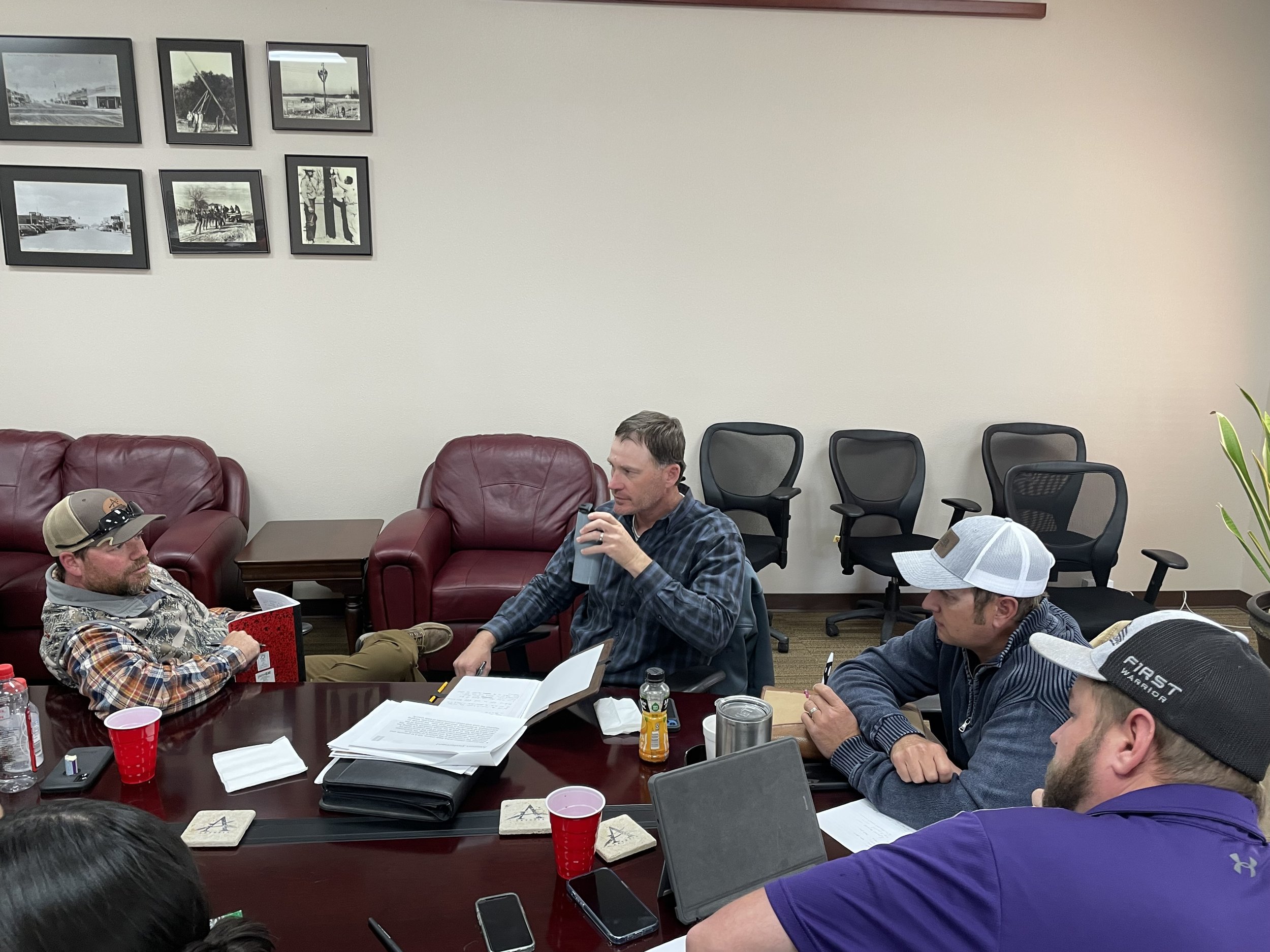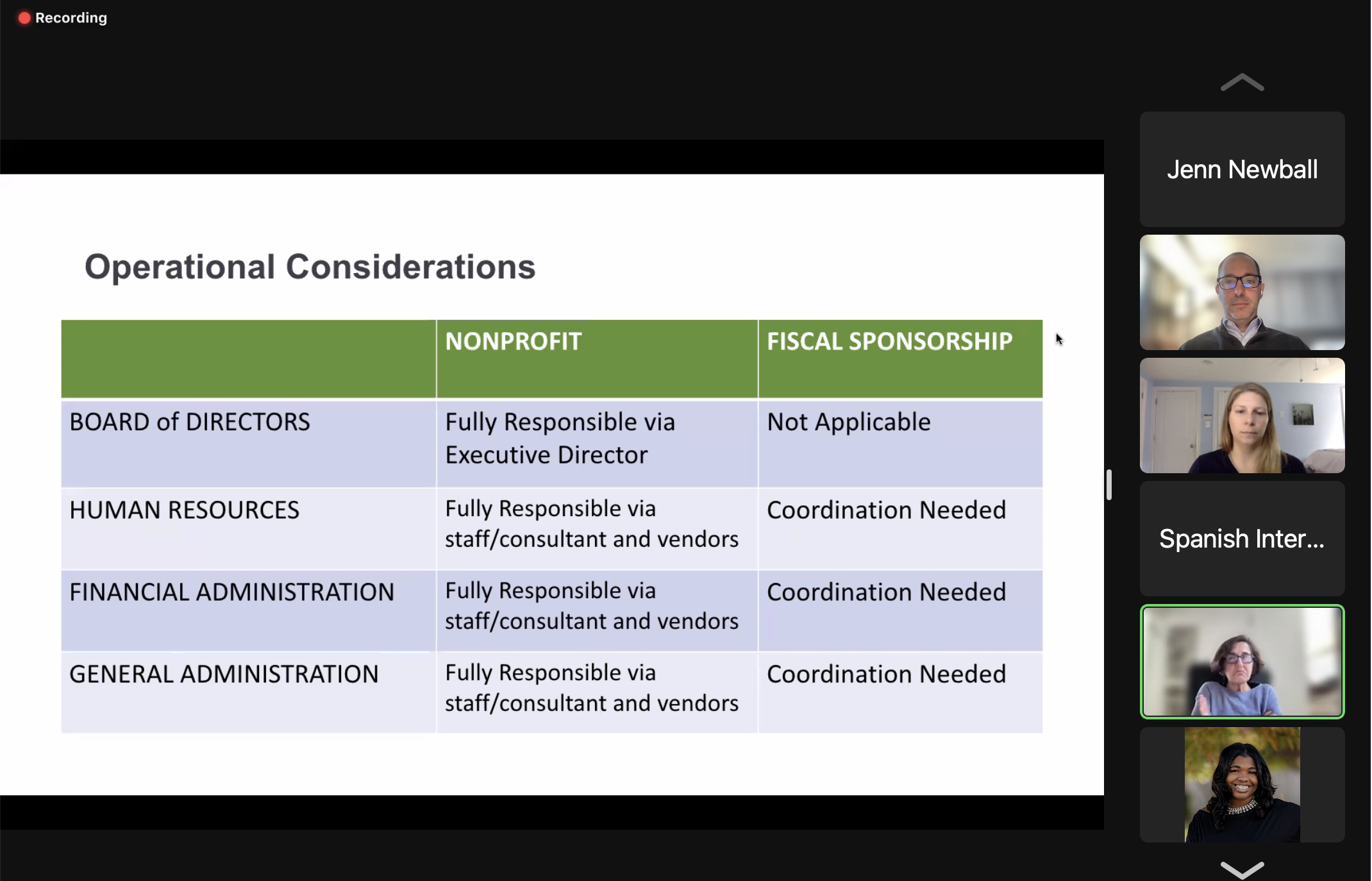
Latest News
Institute for Transformational Nonprofit Leadership
This spring I am pleased to be leading a session on strategic planning as part of the Institute for Transformational Nonprofit Leadership. This executive training program is intended for current CEO/Executive Directors, Executive Leadership team members and those emerging leaders who hope to become a CEO in the future. This program includes seven courses taught by nationally recognized nonprofit leadership executives, coaches, authors, and search consultants virtually over a three-month period in the Fall and Spring. Click below to learn more and register!
Southwest Community Ministries Board Retreat
A Board retreat can be a vital tool that builds trust and strengthens relationships among Board members, while helping to ensure that the Board team is positioned to govern effectively. It was my pleasure to facilitate a Board retreat this week with the talented and committed Board of Southwest Community Ministries (SWCM). SWCM unites area churches, schools, businesses, and individuals to minister to the needs of neighbors who find themselves in poverty and/or crisis.
Visitation Hospital Foundation Board Retreat
Developing thoughtful, actionable strategy first requires alignment around the vision, mission, and values of the organization. It was my pleasure to facilitate a Board retreat this weekend with the tremendous leaders of Visitation Hospital Foundation. Visitation Hospital Foundation was founded in 1999 with the mission to provide competent and compassionate healthcare to the people of southwest Haiti and to empower them with resources to pursue their basic right to health and health education.
Council for a Livable World
Honored to facilitate a meeting of the Board of the Council for a Livable World. The Council is a nonpartisan nonprofit promoting policies to reduce and eventually eliminate nuclear weapons, and to minimize the risk of war through lobbying and by helping elect and support Members of Congress who share their goals.
GUEST BLOG: Sean Kosofsky: The Many Benefits of a Four-Day Workweek
The Four-Day Workweek has been getting a lot of attention these days. But is it all hype?
I researched the four-day workweek for 9 months before implementing a pilot at my national climate change nonprofit in 2022. I’ll share some lessons and benefits of that below.
The main goal of shifting to a four-day workweek is to help employees find a new way to stay productive while also increasing staff morale, work-life balance, and retention. But you are also working to change your community and society by valuing rest, family, and work-life balance.
A primary benefit is that you build loyalty. Workers become far more invested in the success of their employer when they see their employer taking care of them. The loyalty not only comes in the form of retention but also good will and saying good things about the organization publicly.
Another benefit is productivity. Most studies show that workers are as productive or more when they need to get their work squeezed into a shorter window, in exchange for getting more flexibility. (For more on these studies message me NonprofitFixer.com).
Morale is also a powerful benefit. Giving employees time to rest and recharge and spend more time with family or on hobbies or travel, makes them appreciate their job more.
But there are other possible benefits. If your employees are expected to work at a physical location, reducing the number of days that employees have to commute improves their lives immediately.
It reduces carbon emissions, soul-crushing commutes, energy costs at the office, and possibly car accidents. It may also reduce organizational expenses if you have a kitchen, coffee, or snacks that you provide to workers.
Another benefit of the four-day workweek, although we did not use it this way, is that it creates another tool for management in discussing raises and benefits.
One could argue you are giving your employees a 15-20% raise in the form of their time back. They have the same workload and the same pay, but now, if they are creative and productive, they get 7-8 hours a week back and less of a commute.
Workers may not see this the same way, but you are creating a new benefit for workers and that must be factored into your compensation philosophy.
Finally, workers and managers goof off sometimes. Everyone does. CEOs do and frontline workers do. When you stretch the workweek across 5 days, you are expanding the number of hours where employees may surf the web for news, call their partners, or who knows what else.
By pushing the work into a truncated window it is simply more difficult to goof off.
There is data to suggest that employees are currently being paid for many hours of “non-work” related activities. Is the four-day workweek right for your organization? How does it interact with Open PTO or Unlimited PTO?
For more information about these questions, the process, and the other articles and research we compiled that led us to try the four-day workweek, work with me . You can also head over to my “Complete Guide to Implementing a Four-Day Workweek). And get on my email list to hear about the March 2 training on how to implement the 4DWW. Full link here https://www.nonprofitfixer.com/nonprofit-fixer-blog/the-complete-guide-to-implementing-the-four-day-workweek
Come to our training on March 2, 2023 also. https://bit.ly/4DWWSales
Share this with everyone in your network and on social media!
Sean Kosofsky, The Nonprofit Fixer
Mind the Gap Consulting, LLC
________________________________________________________________________________________
Sean M. Kosofsky, MPA Bio
Sean Kosofsky is the Nonprofit Fixer! He is a coach, consultant, trainer, and strategic advisor. For the past 30+ years, he has helped causes, campaigns and candidates raise millions of dollars and transformed nonprofit organizations and leaders. He has served in a wide variety of roles in nonprofits, including policy, communications, development, grassroots organizing, direct service, board leadership, and five stints as an executive director. He has worked on a wide range of issues including LGBTQ equality, reproductive justice, voting access, bullying prevention, climate change, and more.
His work has been covered in media outlets internationally and he has received numerous awards and recognitions from the sector, the City of Detroit and the State of Michigan. His work has appeared through partnerships with blog posts through AFP, Candid, Idealware, Bloomerang, TechSoup, Wild Apricot, Funding for Good, and Pamela Grow’s Motivate Mondays, and more. He is an author and the owner of Mind the Gap Consulting. Sean is currently the Executive Director of Climate Advocacy Lab. He is a proud Detroit native but lives with his husband and dog in New York City. Check out his resources at Nonprofitfixer.com.
CASA of Lincoln Trail Board Retreat
I have had the privilege of working with many Court Appointed Special Advocates (CASA) programs across the country. This weekend, I had the honor of facilitating a Board retreat with the amazing team of CASA of Lincoln Trail. CASA supports and promotes court-appointed volunteer advocacy for abused and neglected children so that they can thrive in safe, permanent homes. If you want to make a difference in the life of a child, consider volunteering for your local CASA program!
National Drowning Prevention Alliance (NDPA) Strategic Planning Retreat
Drowning is the single leading cause of death of children ages 1-4. In the U.S. drowning takes an average of 3,500-4,000 lives per year. That is an average of 10 fatal drownings per day. I was honored to facilitate the strategic planning process for the National Drowning Prevention Alliance (NDPA). NDPA’s mission is elevating awareness to educate, advocate, innovate, and equip to prevent drownings. I invite you to learn more about NDPA and its alliance partners so you too can be part of the solution to prevent drownings.
Eddy County Fair Strategic Planning Retreat
Through my partnership with Leadership Strategies, I was honored to spend the past 2 days facilitating a strategic planning retreat with the leaders of the Eddy County Fair in New Mexico. The Eddy County Fair brings tremendous economic value and provides valuable lifelong lessons of leadership for the children and families of the community.
Leadership Strategies Core Team Summit
In addition to leading Nielsen Training & Consulting, I am a proud member of the Core Team of Leadership Strategies, which exists to empower groups to achieve impactful results through training and facilitation. Over the past few days, I have had the great privilege of gathering with my core team colleagues from around the world to learn with and from one another at the annual Leadership Strategies Core Team Summit. I value these relationships and learned so much. I especially thank the amazing staff of Leadership Strategies for bringing us together and providing a space for such incredible learning and relationship building.
Board Champions: Alley Cat Advocates
Developing a highly effective Board doesn’t happen overnight, but is the product of intentionality, engagement, and effort. Last night, I was delighted to facilitate a session with the Board of Alley Cat Advocates as they participate in our signature Board Champions program. Alley Cat Advocates provides for the humane treatment of unowned cats in our community by directing a Trap-Neuter-Return (TNR) program in the safest, most efficient and cost effective way possible.
Eddy County Fair Board Retreat
Through my partnership with Leadership Strategies, I was honored to spend the day facilitating a discussion of the Habits and Practices of Healthy Boards with the leaders of the Eddy County Fair in New Mexico. The Eddy County Fair brings tremendous economic value and provides valuable lifelong lessons of leadership for the children and families of the community.
Mission Ambassadors
What if your Board and staff members embraced their role as advocates and ambassadors for the mission? Imagine the enhanced awareness of your mission and impact!
Enjoyed leading a webinar and discussion this week for DCM Associates entitled “Mission Ambassadors: Developing Effective and Empowered Board Advocates.”
Gratitude for Nonprofit Leaders
While gratitude is best expressed year-round, this time of year serves as a gentle reminder to thank those who have been meaningful in our lives. For those serving on nonprofit boards, you may wish to thank your nonprofit’s leadership. Nonprofit leaders carry tremendous responsibility on their shoulders, and often serve as the keepers of the flame that is the organization’s mission. If you are a nonprofit board member and you are wondering how you can express gratitude to your organization’s leadership this year, below are just a few important suggestions.
Be Present
What many board members may not realize about nonprofit leadership is that it can be incredibly lonely or isolating at times. This loneliness is compounded when board members disappear or disengage for periods of time. Nonprofit leaders want to know they have a partner in the proverbial boat with them, rowing in unison towards a common destination. board members can demonstrate their commitment to the mission and respect for the organization’s leadership by showing up, both physically at meetings and emotionally through their engagement.
Own Your Lane of Success
In order for an organization to thrive, everyone must understand and embrace their unique role, what I refer to as your lane of success. For board members, this means embracing three critical responsibilities: setting strategic direction, providing meaningful oversight and ensuring adequate resources for the mission. Tangible actions such as ensuring the organization has an effective strategic plan in place or opening doors for the organization’s leadership in fundraising go a long way towards the ultimate success of the organization. Board members display gratitude for their nonprofit leadership when they own these roles while also respecting the unique lane of success for nonprofit staff leaders.
Provide Meaningful Support
Meaningful support from board members may come in a variety of forms, and a savvy, thoughtful board member will have a keen sense of what is most needed and valued by the leadership of the organization. Meaningful support means ensuring that nonprofit leaders are compensated fairly for the tremendous talent and value they bring to the mission. It also means ensuring that opportunities and resources exist for professional development or coaching, as all leaders strive to continuously hone their skills and gifts. Board members can display gratitude towards nonprofit leaders by establishing a culture of equitable compensation and embracing learning and development.
Embrace Complexity
The vast majority of nonprofits address challenges that are extremely complex, systemic, and have existed for generations. Often, the “right” program or course of action may be difficult to discern, or at the very least nuanced in its creation or implementation. Nonprofit leaders routinely express that they value board members who are willing to ask challenging or probing questions, but at the same time demonstrate a willingness to listen to learn when the answers may not be short or simple. One piece of advice board members may consider is to be willing to ask short questions and listen to long answers. Embracing the complexity of the mission demonstrates to nonprofit leaders that board members understand the challenges before them as well as the skill which it will take to address them.
Nonprofits thrive when there is a healthy relationship and partnership between its staff and board leaders. As board members reflect on how they might actively demonstrate gratitude towards their organization’s leadership, the actions above represent tangible ways in which they can strengthen those bonds and enhance the culture of the organization.
Green Hill Therapy Strategic Planning Retreat
Back in 2008, I began my career in nonprofit leadership as a 29 year old Executive Director at Green Hill Therapy. Nearly fifteen years later, it was my great privilege to facilitate a strategic planning retreat on Friday with the outstanding Board and staff leaders of Green Hill. Green Hill Therapy is dedicated to helping children reach their full potential, using hippotherapy and aquatherapy to enhance outpatient occupational, physical and speech therapy services.
Pillar Board Retreat
Enjoyed a wonderful day on Friday facilitating a retreat with the talented and committed Board of Pillar. Pillar’s mission is to provide supports to people with disabilities by promoting opportunity, choice, and connection to the community.
What Makes a Great Board Chair? 💡
As the leader of the board, the chair plays a vital role in building and cultivating an effective team and promoting a healthy partnership with an organization’s staff. Certain attributes such as time availability, passion for the mission and strong interpersonal skills are undeniably essential for board chairs. Here are six additional characteristics of great board chairs:
Cultivate effective decision making
Nonprofit boards often confront difficult decisions that require thoughtful discussion and consideration of diverse points of view. Board members should feel empowered to share their perspective and even professionally disagree. At some point, however, the board must come to a consensus in order to provide meaningful direction that advances the organization’s mission. Great board chairs intentionally cultivate a culture that is inclusive of debate and discussion, and also conducive to effective decision making and progress.
Put board members in position to succeed
A board is a team of individuals with diverse skills, interests and perspectives. Board members find value and purpose in different aspects of their role. Some may be eloquent ambassadors for the mission, while others prefer to contribute in less visible ways. Great board chairs take the time to understand the unique value each member brings to the team and then intentionally seek out opportunities to put members in positions to be successful based on their talents and passions.
Facilitate meaningful meetings
Time is perhaps the most precious gift board members have to give. Whether the board comes together once a month or just a few times each year, it is essential that those gatherings be meaningful and productive. Great board chairs develop the agenda for the meeting thoughtfully and collaboratively with fellow board members and the executive. They also think critically about the facilitation of the meeting and who best possesses the skill and interest to do so effectively.
Focus on shared success
Board chairs are a bit like presidents — they hold the office for a limited period of time and often receive credit when things go well and blame when things go poorly. Great board chairs foster a culture of shared, rather than individual, success. They speak in terms of “our” success rather than “my” success. They recognize that the protagonist in the story is always the mission of the organization, rather than any one individual or leader.
Plan for succession
An important corollary to shared success is succession. Healthy boards rely on a steady stream of prepared and effective leaders. The cadence of governance also depends on building momentum from month to month and year to year. Boards that experience an inconsistent level of performance from one board chair to the next struggle to build the necessary momentum for lasting impact. Therefore, great board chairs keep a keen eye on succession, ensuring that the individuals to follow are engaged, prepared and excited to assume the mantle of leadership.
Ensure accountability
If you reflect on the most effective teams you have ever been a part of, one characteristic is seemingly mentioned more often than any other: accountability. Board members are accountable for their fiduciary duties. They are accountable for attending meetings. They are accountable for fulfilling the expectations the organization has created for its members. Creating formal and professional processes to track and ensure this accountability is a hallmark of a great board chair.
The board chair and executive director are pivotal partners in nonprofit organizations. Together, and with their respective teams, they hold the promise of what an organization can be and the impact it can have on the community. With preparation, support and intentionality, great board chairs can elevate an organization’s present impact and set it on a path towards sustainable success.
Appraisal Institute
Through my partnership with Leadership Strategies, I was honored to spend the day facilitating a discussion of the Habits and Practices of Healthy Boards with the talented chapter leaders of the Appraisal Institute. The Appraisal Institute is a global professional association of real estate appraisers, whose mission is to empower valuation professionals through community, credentialing, education, body of knowledge and ethical standards. Leadership Strategies empowers groups to achieve impactful results and provides services like onsite training and public classes to further support you and your growth.
Home Grown Child Care: A Discussion of Nonprofit Formation and Fiscal Sponsorship
The decision of whether to form a new nonprofit organization or explore alternatives such as fiscal sponsorship is a difficult one, and requires thoughtful deliberation of how best to achieve your goals. Honored to join Home Grown Child Care and co-facilitator Amy Friedlander for a discussion of nonprofit formation and fiscal sponsorship.
NTCA Conference
Grateful to NTCA - The Rural Broadband Association — for the invitation to present at their conference in San Francisco today. Thoroughly enjoyed speaking on the legal and fiduciary responsibilities of Board members as well as trends in cooperative governance. NTCA proudly represents nearly 850 independent, family-owned and community-based broadband companies that are building and delivering connectivity and essential services in rural and small-town communities across the U.S.
CASA of Lexington Board Retreat 2022
Honored to spend time last week facilitating a retreat for the talented and committed Board members of CASA of Lexington. Their vision is a community where every child lives and thrives in a safe, caring and permanent home. They are getting there one child at a time!


